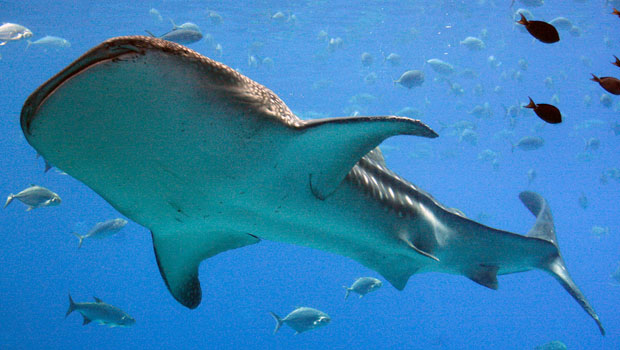Scientists at the Georgia Aquarium and Emory University are teaming up to produce the first genome of the whale shark, bidding to catalog the DNA of a fish that long has puzzled researchers.
Why do whale sharks grow so big (up to 40 feet (12 meters) long)? How are they related to other fish? Are they members of one big family or hundreds of smaller ones? "It's like being given some fantastic machine and then being given the blueprints as well," said senior scientist Alistair Dove at the Georgia Aquarium. "This is a chance to apply cutting-edge technology to a species that's very enigmatic, very large and very mysterious." The aquarium is the only one outside of Asia to house whale sharks and the first to extract blood from the giant fish. Now that blood is being processed by scientists at Emory's Genome Center who will create the map of the shark's genetic makeup.
The process could take months, as the DNA is placed on slides and inserted into a special machine that produces genetic sequences. In the end, the genome could be billions of letters long or could be much smaller.
Some of the world's smallest frogs have immense genomes filling volumes larger than an encyclopedia. This is the first time any scientists have attempted such an undertaking for a whale shark.
Emory researcher Tim Read said he wanted to test new equipment and thought the whale shark was the perfect candidate because it was largely unstudied. He called the aquarium and offered to help move them years ahead in their research on whale sharks.
"It's a lot like assembling a puzzle but you don't have the corner pieces and you don't have the box to look at," said Read. "We don't know what it's like to be a shark from a genetic perspective." The whale shark looks ominous but is actually gentle, eating plankton and small fish in the water and filtering it through its tiny teeth and quarter-size throat. The spotted fish are considered sharks, not whales, despite their size.
Whale sharks live in tropical waters in about 20 known locations across the globe, including Mexico and parts of Asia.










